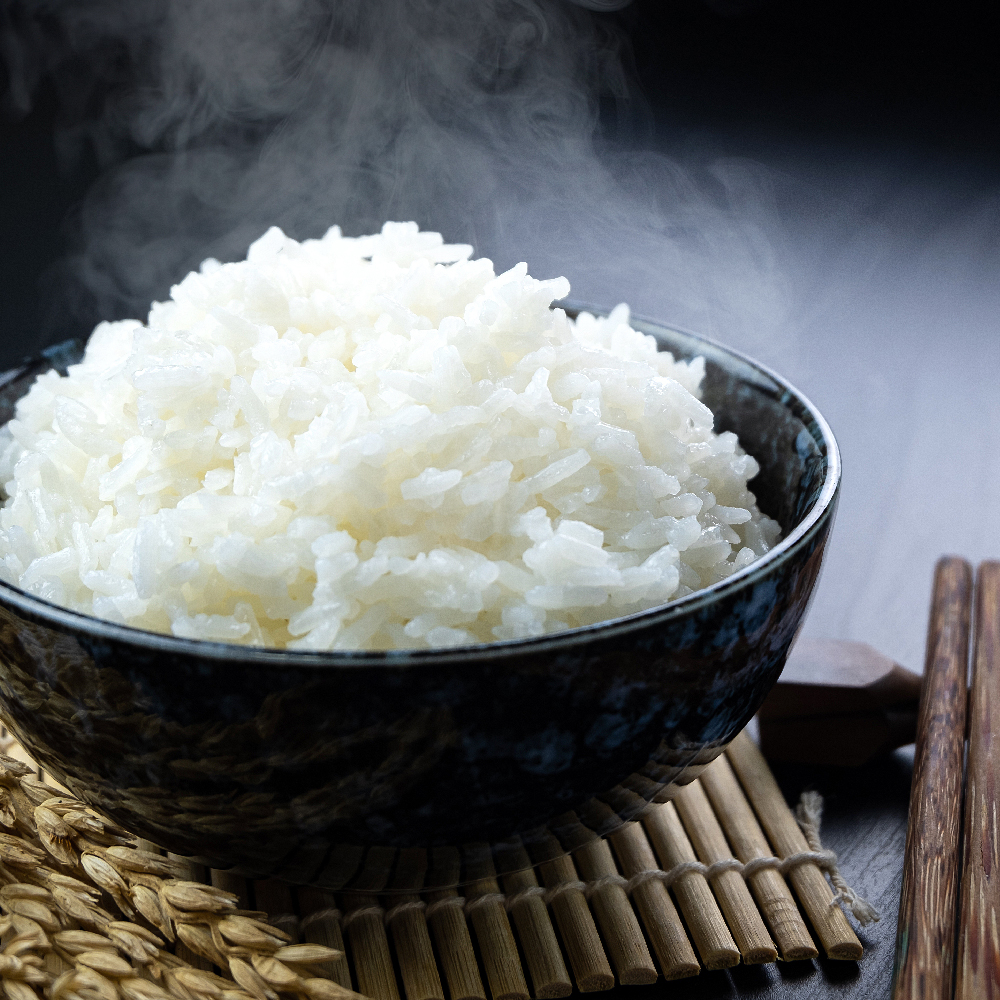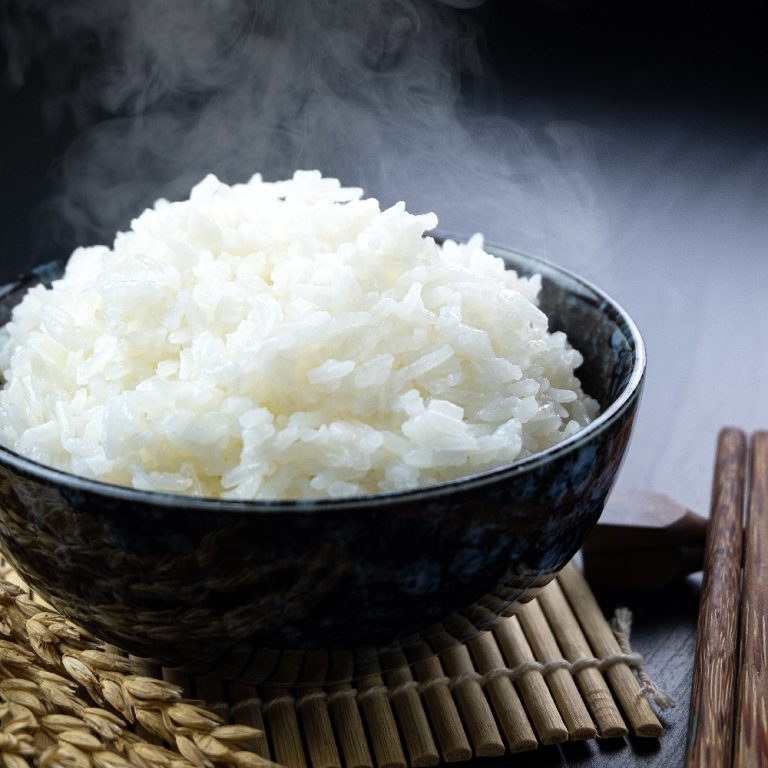Sticky rice, also known as sticky rice, is a Thai specialty. In the national cuisine, it is used either as a side dish or as the basis for more elaborate dishes. We will introduce you to the type of rice and show you a simple basic recipe.
Sticky rice is a type of rice that is mainly found in Thailand, but also in other Asian countries. It has thick, bulbous grains that resemble jasmine rice. While uncooked jasmine rice appears slightly translucent, glutinous rice – or sticky rice – is white. This is due to its high starch content.
Another difference lies in the way it is prepared: sticky rice is not boiled but steamed. As a result, the individual rice grains stick together and the sticky rice gets the typical consistency for which it is named. According to Thai tradition, a special bamboo basket (for example via** Avocadostore) is used for steaming. A steamer or a large saucepan serves the same purpose.
You can get sticky rice in Asian shops or in well-stocked supermarkets. Some manufacturers also offer sticky rice in organic quality. If you have the choice, you should opt for the organic version – this way you support sustainable cultivation conditions and avoid rice that is contaminated with chemical-synthetic pesticides. Ideally, the sticky rice should also have a Fairtrade seal: Then you can be sure that it comes from fair trade.
The nutritional values of sticky rice

Cooked sticky rice contains about 150 calories per 100 grams. Uncooked, it usually contains between 330 and 350 kilocalories per 100 grams. Uncooked sticky rice has the following additional nutritional values:
Protein: 7 g
Carbohydrates: 77 g
Fat: 0.8g
Sugar: 0 grams.
Like all types of rice, sticky rice is low in fat and cholesterol and rich in minerals. On the other hand, it contains less fiber than, for example, whole grain rice.
Sticky Rice: Simple basic recipe
Because glutinous rice needs to be steamed, the best way to cook it is in a special steamer. If you don’t have one, a simple saucepan and sieve will suffice. Make sure that the sieve can be hung in the saucepan.
Ingredients:
250 g sticky rice
water
Directions:
Wash the glutinous rice in lukewarm water until the water runs clear. Then put it in a bowl of cold water and stir well. Let the sticky rice sit in the water for at least three hours. If you want, you can put it in the night before and leave it overnight.
Pour the glutinous rice into a colander and rinse thoroughly.
If you are using a steamer for the preparation, line the steamer insert with a damp kitchen towel and put the sticky rice in it. Fill the pot with one liter of water and insert the insert. Then fold the kitchen towel over the rice and put the lid on. Let the rice steam over medium heat for 30 minutes. Alternatively, you can use a large saucepan. Fill it with about a liter of water and place the sieve on the edge of the pot. Line the sieve with a kitchen towel, add the glutinous rice and fold the towel over the rice. Then put the lid on the pot. Make sure to keep the gap between the sieve and the lid as small as possible so that not too much steam can escape.
Steam the glutinous rice with the lid on and over medium heat for about half an hour. Then remove the pot from the stove. Caution: If some steam escapes despite the lid being on, be careful not to burn yourself.
Let the finished glutinous rice cool down a bit before you serve it as a side dish or process it further.
This is how you can process sticky rice

You can either serve the finished sticky rice as an accompaniment to other dishes or process it further. A classic Thai recipe is sticky rice with coconut milk and mango. To do this, boil 400 milliliters of coconut milk together with 50 grams of sugar and some salt and mix them with the finished rice. The dish is garnished with fresh mango slices.
However, both mangoes and coconut milk have a bad ecological balance because they cannot be cultivated regionally and have to be imported over long distances. You should therefore only use both occasionally when cooking. If you want to do without coconut milk, you can use regional organic cream or oat cream instead – this also makes the sticky rice nice and creamy. As an alternative to mangoes, you can try peaches or apricots, for example. You can get both from German cultivation during the season. You can find out which types of fruit are in season at what time of year in the Utopia seasonal calendar.

